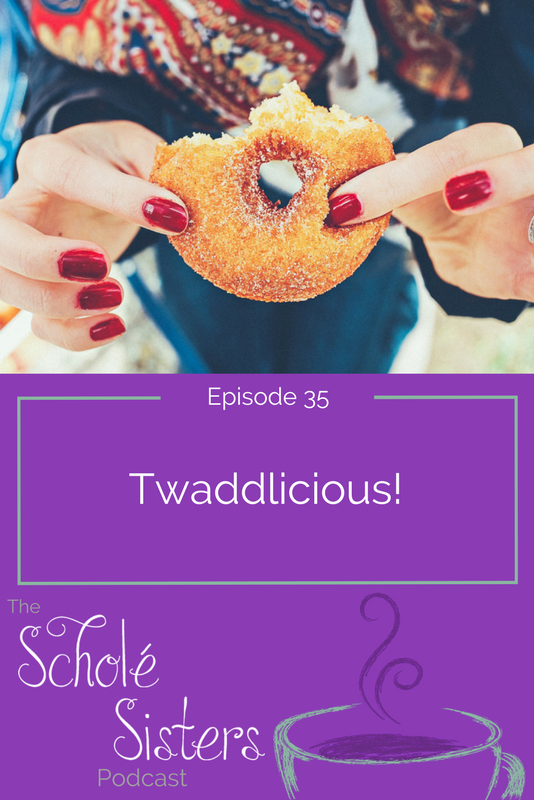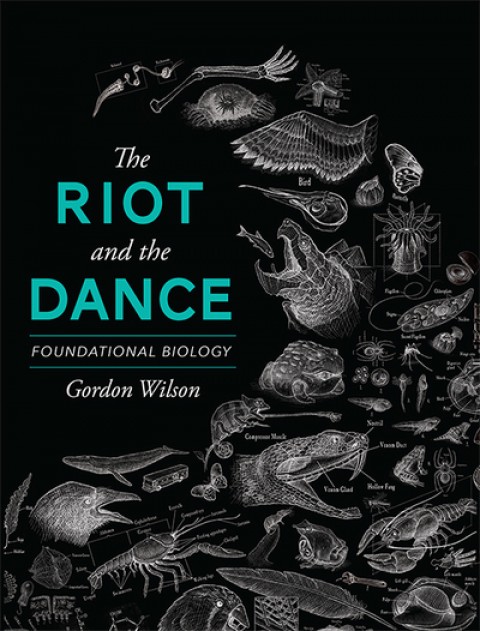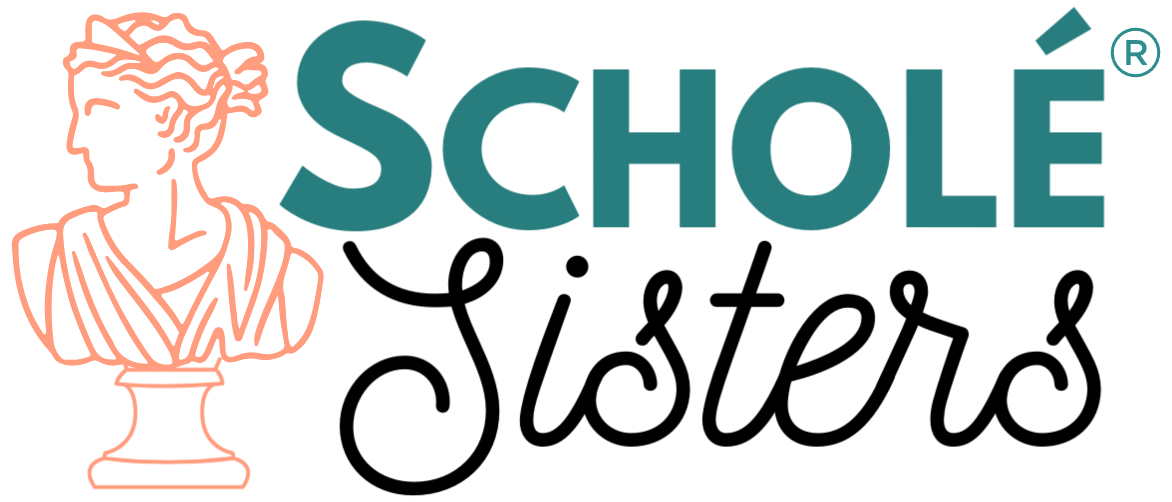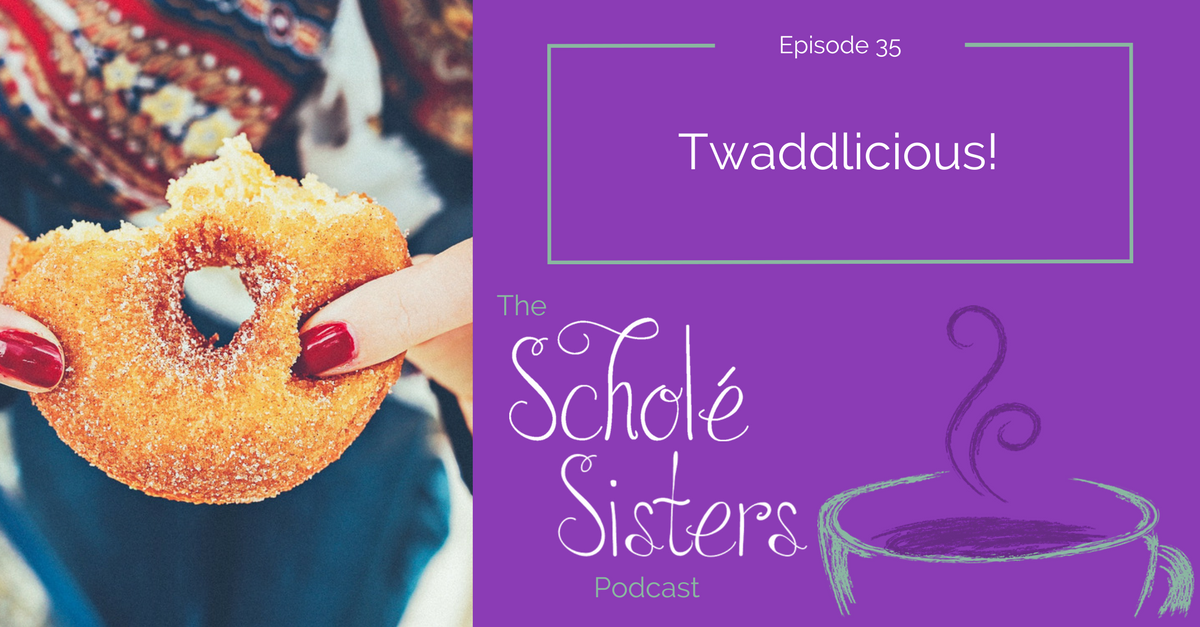SS #35: Twaddlicious!
On today’s episode, Mystie, Pam, and Brandy have a rousing discussion on the subject of twaddle. What is it? What isn’t it? Is it ever acceptable? Some of us have unconventional opinions on this subject.

Thank you to our sponsor:
This episode is sponsored by Plan Your Year. Plan Your Year is the homeschool planner that shows you how. It walks you step-by-step through creating a homeschool plan unique to your home, your kids, your family. There are over 40 printable planning pages plus an 80-page planning guide where Pam walks you through creating your plan. Nothing ever expires and you get free updates every year. It’s the only homeschool planner you will ever need. Click here to check out a free sample pack of planning pages.
Listen to the podcast:
Podcast: Play in new window | Download
Show Notes:
- Scholé Every Day
- Mystie:
- Pam:
- Brandy:
The Graves of Academe by Richard Mitchell
- Topical Discussion: Twaddlicious!
-
- CM elbow chair quote
The question resolves itself into–What manner of book will find its way with upheaving effect into the mind of an intelligent boy or girl? We need not ask what the girl or boy likes. She very often likes the twaddle of goody-goody story books, he likes condiments, highly-spiced tales of adventure. We are all capable of liking mental food of a poor quality and a titillating nature; and possibly such food is good for us when our minds are in need of an elbow-chair; but our spiritual life is sustained on other stuff, whether we be boys or girls, men or women. By spiritual I mean that which is not corporeal; and which, for convenience’ sake, we call by various names–the life of thought, the life of feeling, the life of the soul. (School Education, p. 168)
- Webster’s 1828 Dictionary online
Example of the kind of Usborne Book we’re talking about — please note that NOT all Usborne books are reference books
Holman Bible Atlas
The Great Tradition by Richard Gamble
The Lively Art of Writing by Lucile Vaughan Payne
- SIMPLE DOES NOT NECESSARILY EQUAL TWADDLE.
- COMPLEX DOES NOT NECESSARILY EQUAL LIVING.
- TEXTBOOK DOES NOT NECESSARILY EQUAL TWADDLE OR LIVING.
 The Riot and the Dance biology textbook that Brandy and Mystie are both using with their high schoolers this year
The Riot and the Dance biology textbook that Brandy and Mystie are both using with their high schoolers this yearThe Handbook of Nature Study by Anna Botsford Comstock
Henry and Mudge Series by Cynthia Rylant
Frog and Toad series by Arnold Lobel
ORIGINAL Curious George by HA Rey
The Cat in the Hat by Dr. Seuss
Horton Hears a Who by Dr. Seuss
The Lorax by Dr. Seuss
- Brandy’s post on The Lorax: The Lorax and the Unfettered Marketplace
Penny and Her Marble by Kevin Henkes
I Want My Hat Back by Jon Klassen
- Elephant and Piggy books by Mo Willems
- Bodie Thoene
Redwall by Brian Jacques
- EP 21: Amusing Ourselves to Leisure
-
Please leave us a review in Apple Podcasts!
If you upgraded to iOS 11, you’ll find leaving a review easier than ever. Just go to Scholé Sisters in your subscriptions and scroll down.
























I just love you guys!! ???. Your just really “fun guys”. ?.
Hahahahah!
Thanks for this episode. It was really timely! My preschooler loves wit and rhyming (Dr. Suess, Elephant and Piggy) and I’ve been trying to sort through which books are worth our time and which to forego. I really appreciate your humor and humility as you talk about that process!
When we read The Lorax, my daughter was visibly upset about all of the trees disappearing and I was pleased that she was so concerned about protecting God’s creation…until I realized that she was upset because without any trees, the Once-ler family wouldn’t be able to make any more Thneeds. Her favorite part of the book was when “the whole Once-ler family was working full tilt.” #facepalm
Sounds like you have a budding entrepreneur on your hands? Haha!
Love this episode!!
This is a great episode! I had so many thoughts to add, like Suess wrote some things that about just teaching language and language structure. The Foot Book, Hop on Pop, that sort. And then some books are deeper, like The Thinks You Think.
I’ve got to think more about the facts vs ideas. I don’t think that is a clear line, as even the Usborne reference books, which I just LOVE, offer ideas as well as facts (at least as I understand it). Oh, my. I need a discussion of facts vs ideas vs opinions. But then, I live with a philosopher, I should ask him, too.
And, did you know that Underground Grammarian texts (and old newsletters) are all here: https://sourcetext.com/grammarian/ I learned about this guy doing my MA in Linguistics. 😀
Mama Rachael – Here is a place to start with facts vs. ideas: https://pambarnhill.com/ymb25/
I loved listening to this podcast…you gave me so very much to chew on. I had thought I understood what living books were, but I feel like I’m still really unsure. So I totally get what “junk food” books are. But thinking about young children who cannot yet read – picture books – I’m not sure that they fall into the twaddle category when they introduce kids to beautiful illustrations (e.g. Jan Brett) or ideas (e.g. Frog and Toad, and George and Martha are so much about friendship!), as well as those middle grade novels like the Redwall books which help build vocabulary and make readers more fluent so they CAN read greater, rich works of literature. Lol! I just heard the end of your podcast when you mentioned you hadn’t really touched on what is and isn’t a living book :). You should do that podcast too!
Good idea! We will do that topic someday. I just need an equally good name!! 🙂
Just want to thank you so much for emphasizing the importance of in person community (I think it was Pam). As valuable as podcast/FB groups are — including yours– I feel like there is a very concerning trend among homeschool moms to ONLY find community online!
I decided to look up information about elbow chairs and discovered that and elbow chair is a wooden chair with arms. Formal looking in the early 1900’s with very little padding. For example a dining table chair with arms or desk chair with arms, square or barrel shaped. Sometimes I’ve seen them called an occasional chair. Where a standard dining chair one would be expected to sit up strait in, even lean slightly forward–one would never have rested one back against the chair-back of such a chair–It appears an elbow chair is the type one would’ve sat back in occasionally and rested ones elbows on its arms while folding hands in thought.
This makes me laugh. I remember reading once that Miss Mason didn’t want couches for her students because she didn’t want them to get too comfortable. It makes me wonderful if an elbow chair was about as good as it was going to get with her! 😉